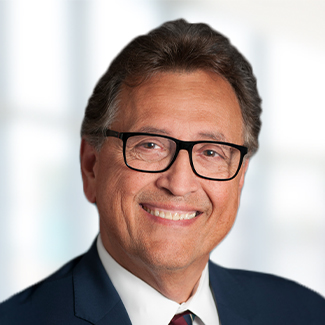“Anybody can get addicted. The reality today is most of the people who are abusing alcohol and other drugs are employed. Statistically speaking it’s not the person living under the bridge, it’s more likely that the person who is an alcoholic or drug user is the person working next to you.”

Bob Poznanovich, former VP of sales for Zenith Data Systems, and current VP of Business Development for the Hazelden Betty Ford Foundation, knows firsthand the price of addiction, when at 30 years old he became addicted to cocaine.
“Obviously this was a destructive time for my family and me, along with the company and its employees and customers. The sad part for them, and for me, was that nobody was able to help. Not only was I in denial about my addiction, but most of my coworkers were in denial, as well. What’s worse, those who weren’t in denial didn’t know what to do. There were many meetings at work about me, but never a meeting with me, until the last day when I was fired.”
Not only did the company lose an employee who had driven a large part of the business (half a billion dollars in sales), but Bob was also left to struggle through the problem alone.
Addiction and substance abuse affects over 24 million Americans. One out of every 8 people experiences some kind of substance abuse at some point in their lives, be it with drugs, marijuana, or alcohol, which is the number one form of addiction across the nation, and in the five-state Midwest region.
Substance abuse is the last corporate frontier
In the past, substance abuse issues have not been addressed in corporate environments. Denial or tolerance has been the norm. It was only until the dramatic increase of opioid addiction over the past decade that employers have taken notice of the costs, and actual loss of life. According to the National Safety Council, opioid-related overdoses will result in another 130 American deaths in the next 24 hours.
Health care costs are three times higher to treat an employee struggling with substance abuse, and workers' compensation claims are five times higher than for other workers. These costs, combined with those of absenteeism, lower productivity, violence, and accidents in the workplace, amount to an actual cost to businesses of $100 billion a year. And, with data suggesting that substance abuse issues are only expected to dramatically increase due to the stress, fear, and isolation of COVID, this is a problem that can no longer be ignored.
In Bob’s opinion, things could have turned around dramatically with his addiction, had he received the proper help at the time from his employer.
“Looking back at that point in my life, it became clear to me that if the company had stepped in and talked to me, had done some form of intervention early on, I would have gotten help immediately. I would have gone to treatment, and I would have stopped using drugs. Work and my career were so important that I would have done anything to save them.”
For any company to move forward, the stigma and myths that surround substance use and its treatment need to be addressed. These include addiction being considered a shameful weakness, and that treatment for it does not work.
According to the U.S. Surgeon General’s Report from 2016, substance use disorder is now classified as a chronic disease that can be “effectively treated with recurrence rates no higher than those for other chronic illnesses, such as diabetes, asthma and hypertension.”
For substance use disorder to be tackled successfully in the workplace, employers need to address policies toward its awareness and prevention, and recognize it as a chronic disease. Most importantly, employers should ensure that the right help is available, that their health plan covers the appropriate treatment options and that carefully vetted providers are part of the network.
Fighting stigma around substance abuse is much easier said than done. Programs such as HealthPartners’ Make It OK provide many tools to spark awareness and guide conversations around these difficult topics.
How to guide employees to the right help
It’s key to offer employees confidential ways to access the right help rather than leaving them to the mercy of Google. They should understand that they can contact their health plan or primary care doctor for referrals. An Employee Assistance Program (EAP) can also provide both a safe place to talk as well as referrals to the most effective care.
The high cost of addiction in the workplace can affect everyone involved—financially, physically, emotionally, or in all these ways. Who pays the price? With awareness, prevention and education, along with high-quality care as part of health plan benefits, from Bob’s perspective, the answer should be no one.
“It is a disease, it’s chronic in nature, it will change its spiral and get worse without help, but with help we are able to become productive members of society again.”
Since his recovery, Bob Poznanovich has made it his mission to educate employers about the impact of substance abuse in the workplace. Bob’s crusade has enlightened many and brought about much needed change in how companies can achieve long-term success in reducing risk of harm and helping employees to recovery.
Download a copy of our e-book , Working Past Opioids, to learn how the opioid epidemic is affecting the workplace and discover what employers can do to protect their employees.
For an overview of practical measures you and your health plan can take to reduce risk of opioid misuse, download HealthPartners’ Employer Health Plan Checklist-Opioid Preparedness PDF.
Read a guide for families, co-authored by Bob: It's Not Okay to Be a Cannibal: How to Keep Addiction from Eating Your Family Alive